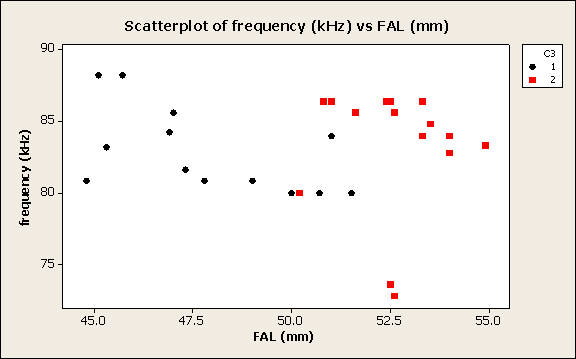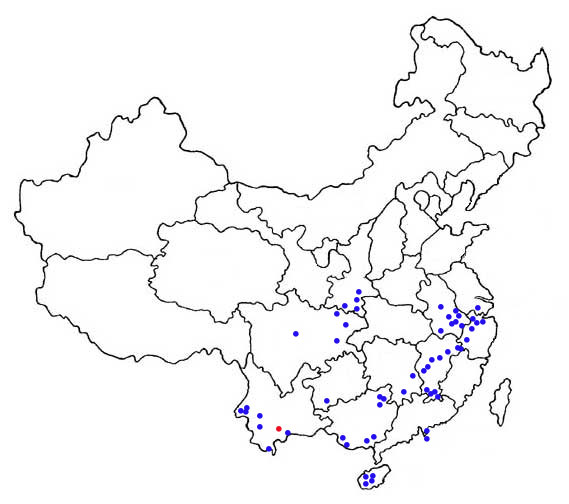Intermediate Horseshoe Bat
Morphological description Life history Distribution Habitat Roost sites and roosting patterns Emergence and flight pattern Foraging behaviour Echolocation calls Status and protection
Morphological Description
· Dorsal fur is darker or lighter brown, sometimes ochraceous buff. Ventral fur is from brown to cream-buff. (Csorba et al., 2003)
· Juveniles are lighter than adults.
· A medium to fairly large horseshoe bat. Over its range, forearm length varies between 46.0-55.5mm (Csorba et al., 2003). Body masses 13.5 - 14.6 g from bats in Yunnan. Forearm lengths of Chinese bats 50.2-54.9 mm (n = 16).
· The sella is pandurate, slightly concave. The connecting process is rounded. The lancet is straight sided, its tip is pointed. (Csorba et al., 2003)
The species is most easily confused with R. sinicus, from which it is best distinguished by its straight-sided lancet and the long second phalanx of the third digit (66.3-80.4% of the length of the metacarpal: Csorba et al., 2003). Unequivocal separation can be performed by sequencing the control region of mtDNA. Echolocation call frequencies overlap with those emitted by R. sinicus. R. affinis is also typically a larger species, though overlap occurs with R. sinicus at forearm lengths between 50-51 mm. The graph below shows frequency of most energy in echolocation calls plotted against forearm length (FAL) for R. affinis (red) and R. sinicus (black). Note the extensive overlap in call frequency, but only small overlap in forearm length. The bats calling at < 75 kHz were R. affinis from Guangdong.

Life history
· Little known
Distribution
The distribution in China is shown by the dots on the map (as given by Zhang et al. 1997). The red dot shows a new record from our field surveys.

Habitat
· Csorba et al . (2003) notes that this bat occurs at altitudes from 670 metres to 1692 metres.
Roost sites and roosting behaviour
· Generally they roost in caves, but we found some individuals using the hollow of the trunk in the tropical forests in Xishuang banna, south Yunnan province.
· This species often shares roosts with other bat species in Yunnan.
Emergence and flight pattern
· Most rhinolophid bats have wing shapes that make them adept at foraging in cluttered environments.
Foraging behaviour
· Little known
Echolocation calls
The echolocation call is a long constant frequency signal, with a brief frequency-modulated start and tail. Call frequency seems to be quite variable. One bat from Guangdong called with most energy at 73.6 kHz, bats in Guangxi, and Yunnan at 86.6 - 86.4 kHz, Henan bats at 82.8-83.3 kHz. Call frequencies overlap with those used by R. sinicus, and so is not a diagnostic feature for separating these species.
Status and protection
· There is no estimation of population size in China.
· Intermediate horseshoe bats are LR/nt, assessed by the Red List of Threatened Species (IUCN, 2006) and are not listed in the Law of the People's Republic of China on the Protection of Wildlife in 1989.
· Caves and old buildings should be protected as their habitats.